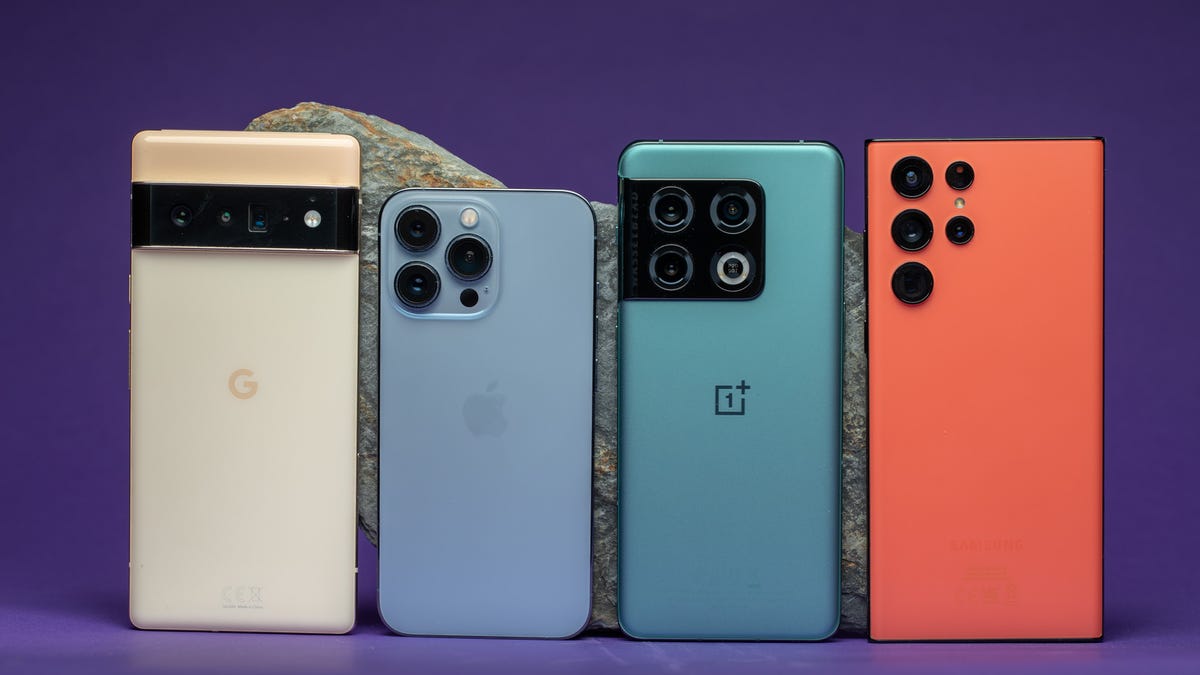By choice or necessity, Americans have fallen for fancier smartphones, televisions, laptops and cars. The companies that make this stuff are trying to assess whether the shift to luxury is a temporary phenomenon or a new normal.
Some relevant stats from 2021:
-
More than one of every four smartphones sold globally last year were higher-priced devices, the largest ever share for those top-tier phones, according to Counterpoint Research.
-
Total U.S. sales of laptop computers cooled off after the bonkers sales in 2020, when Americans stocked up on gear for remote school and work. But sales of laptops that cost at least $1,000 increased 15 percent in a year, the research firm NPD Group told me.
-
Sales of TVs also fell last year from a pandemic-fueled craze in 2020, but NPD said that sales of $1,000-and-up televisions climbed 47 percent.
-
Americans are buying more larger, higher-priced vehicles and fewer economy cars, helping to raise the average cost of new vehicles to records nearly every month.
You might be thinking: INFLATION. Yes — but other factors are also shaping this shift toward the high end. I’ll run through some explanations for a trend that surprised me, and what this might mean for us.
The bottom line: It’s too soon to know for sure, but it appears that pandemic-related changes have altered the reality for goods like electronics and cars. People who don’t want, or can’t afford, higher-end stuff may be out of luck.
OK, let’s dig into the whys, based on my conversations with experts. First, the pandemic caused huge, ongoing disruptions that resulted in shortages of important parts like computer chips and made shipping electronics from Asian factories more expensive. Some companies that couldn’t easily make all their usual products focused instead on their more expensive, more profitable models.
“It costs the same to ship a $300 notebook computer as a $1,300 notebook computer,” said Stephen Baker, a longtime consumer electronics analyst with the NPD Group. A relatively higher supply of pricier products is one reason it has sometimes been easier to find an expensive laptop, smartphone or car than a lower-cost model.
Baker and Maurice Klaehne, a Counterpoint research analyst, also told me that some people have relied more on their home electronics during the pandemic and have been willing to pay a bit more for them than they might have a couple of years ago. Many Americans have also had more money to spend on stuff, because of government benefits during the pandemic or lower spending on things like travel and eating out.
And particularly in the U.S., phone companies have dangled discounts or generous trade-ins for people to buy new smartphones that connect to 5G networks, and those devices typically cost more, Klaehne said.
Those factors have all contributed to a creeping shift of purchases toward the fancy. So too has a lack of discounts on many electronics and cars, again because manufacturers are reluctant to gin up sales when they can’t keep all their products in stock.
My colleague Neal Boudette said that car companies and dealers have been able to charge full sticker price or thousands of dollars more. Automakers are fine with this, even though they can’t keep up with demand. “Automakers are making huge profits even though they’re selling fewer vehicles than they ordinarily would,” he told me.
It’s possible that the pandemic-related oddities will eventually end and we’ll once again have the full spectrum of prices, from budget to high end. Or maybe not. Companies that got hooked on higher profits from pricier products might be unwilling to give that up. And it’s not clear that shipping parts and products around the world will rebound to a 2019 level.
Baker also said that electronics manufacturers were planning to experiment to see if our inclination for higher-priced electronics might stick. Baker predicted that companies that sold a basic Windows laptop for $300 or $350 a couple of years ago will try nudging up entry-level models to $550 or $600, and manufacturers might try cutting back on $499 large-screen TVs to see if a $599 television might sell nearly as well.
“There is a lot of hunting and pecking that is going to happen in the next couple of years to try to understand what is happening,” Baker said.
All that suggests that pricier cars and electronics could be here to stay.
Before we go …
-
Operating an essential communications technology in wartime isn’t simple. My colleagues report on the whiplash for employees of Meta, whose rules have sometimes changed daily about whether gore, calls to violence and other emotional posts related to the war in Ukraine are permitted on Facebook and Instagram.
Related: Why did nearly 11 percent of global tweets with a popular pro-Russian message originate from India? Kate Conger and Suhasini Raj write about why it’s so difficult to know what is real or manufactured in online sentiment.
The newsletter Normcore Tech, written by a Russian-born data scientist, Vicki Boykis, explains why the messaging app Telegram has been so essential during the war.
-
AirPods are destined for the garbage. Or are they? Batteries in the Apple wireless headphones can’t be replaced, at least not officially. Jon Chase at Wirecutter, a product recommendation site that’s part of The New York Times, writes about a company called the Swap Club that will sell you a pair of used AirPods with brand-new batteries. Heck, yes, to this.
Hugs to this
A duck built her nest inside a courtyard of a hospital maternity ward in Florida. After the eggs hatched, mama duck (with help from nice hospital humans) led her ducklings through the halls of labor and delivery and out through the front door.







/cdn.vox-cdn.com/uploads/chorus_asset/file/24041962/226301_Best_Phone_Lede_Update_WJoel_001.jpg)

